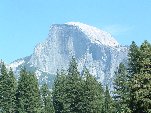I've actually read several books on the New Madrid Earthquake and supposedly it lets loose every 175 to 200 years. Which would be now.
Here is what Wikipedia says about it:
The New Madrid Earthquake, the largest earthquake ever recorded in the contiguous United States, occurred on February 7, 1812. (The largest recorded earthquake in the entire United States was the Alaskan Good Friday Earthquake on March 27, 1964.) It got its name from its primary location in the New Madrid Seismic Zone, near New Madrid, Louisiana Territory (now Missouri). This earthquake was preceded by three other major quakes: two on December 16, 1811, and one on January 23, 1812. These earthquakes destroyed approximately half the town of New Madrid. There were also numerous aftershocks in the area for the rest of that winter. There are estimates that the earthquakes were felt strongly over 50,000 square miles (130,000 km²), and moderately across nearly one million square miles. The historic San Francisco earthquake of 1906, by comparison, was felt moderately over 6,000 square miles (16,000 km²).
Based on the effects of these earthquakes, it can be estimated that they had a magnitude of 8.0 on the Richter scale. As a result of the quakes, large areas sank into the earth, new lakes were formed (notably Reelfoot Lake, Tennessee), and the Mississippi River changed its course, creating Kentucky Bend. Nearby sections of the Mississippi River actually ran backwards for a short time. Sandblows were common throughout the area, and their effects can still be seen from the air in cultivated fields. Church bells were reported to ring in Boston, Massachusetts and sidewalks were reported to have been cracked and broken in Washington, D.C. .[1]
A request, dated January 13, 1814, by William Clark, the governor of Missouri Territory (the territory was renamed soon after the quake to eliminate confusion with the new state of Louisiana), asked for federal relief for the "inhabitants of New Madrid County". This was possibly the first example of a request for disaster relief from the US Federal government, which would later become the job of the Federal Emergency Management Agency.
This area was much less developed at the time and a comparable event today would cause significant damage.
Earth Quake!
18 posts
• Page 2 of 2 • 1, 2
Never heard of it before.
It's either hurricanes, typhoons, tornadoes, earthquakes ,volcanoes or flood & fire prone regions, most live in dangerous areas.
Here's a comparison map. Danny

It's either hurricanes, typhoons, tornadoes, earthquakes ,volcanoes or flood & fire prone regions, most live in dangerous areas.
Here's a comparison map. Danny

"Conditions are never just right. People who delay action until all factors are favorable do nothing". William Feather
Don't accept "It's Good Enough" build to the best of your abilities.
Teardroppers Of Oregon & Washington
-

halfdome, Danny - *Happy Camper
- Posts: 5894
- Images: 252
- Joined: Sun Aug 14, 2005 11:02 pm
- Location: Washington , Pew-al-up
